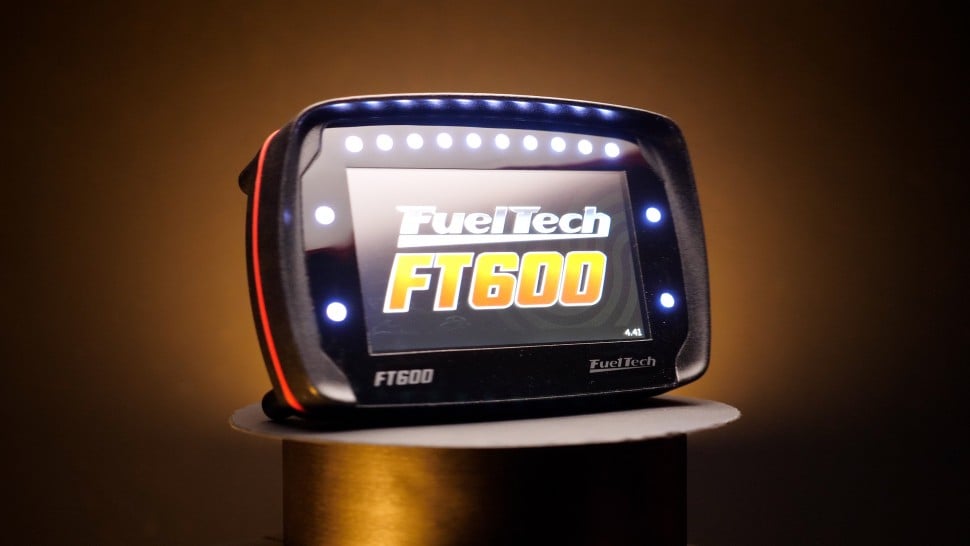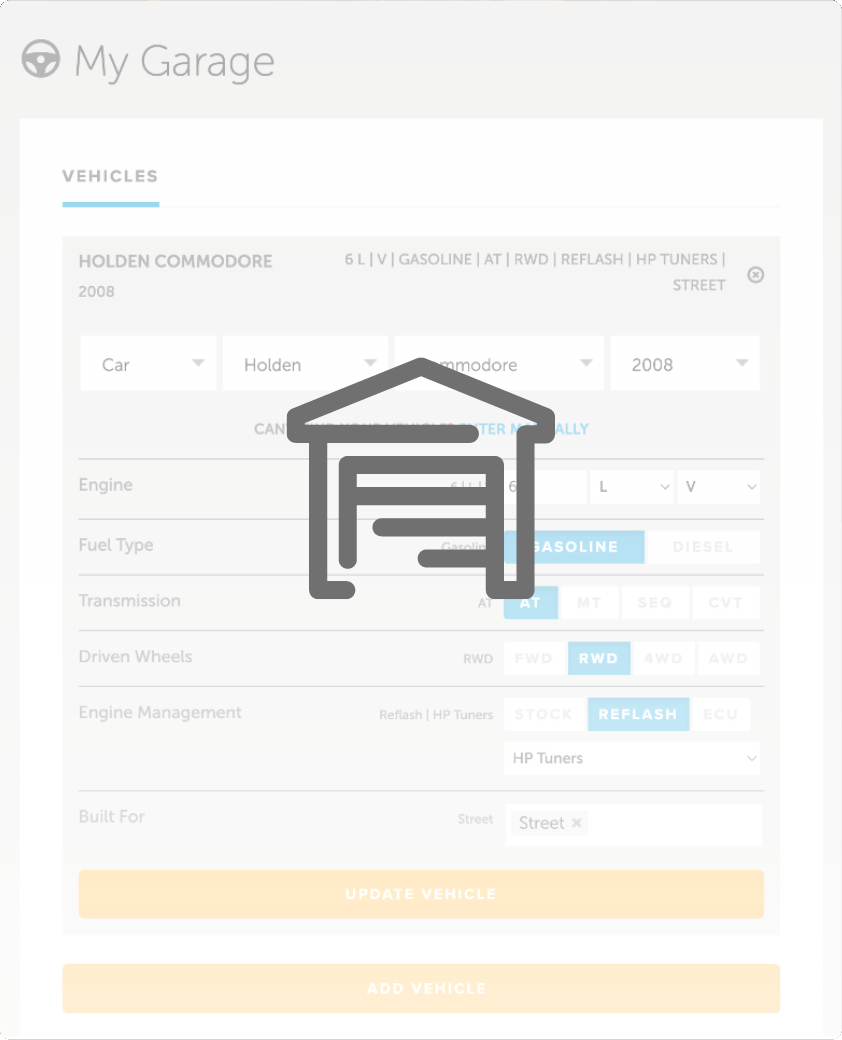| 00:00 |
The fifth step of our process is to optimise the tune and this is really a case of just optimising our fuelling and our ignition timing.
|
| 00:08 |
Of course, you can also optimise your variable valve timing as well, however for simplicity we won't be focusing on that part of the tuning operation during step five here.
|
| 00:19 |
Of course, if we've got the ability to, it's always beneficial to lay down a base run that we can compare our progress to.
|
| 00:27 |
And in the case of heavily modified vehicles, maybe something where you've added forced induction or a large cam where understandably it's just not going to be safe to run the engine on the stock calibration, that's not an option, we're going to have to build up our tune as we go.
|
| 00:42 |
However, in our case with our essentially stock standard vehicle, we absolutely can lay down a base run and that's what we're going to do.
|
| 00:48 |
So, let's head into our editor software and what we'll do is make sure that our file is already saved, which it is, and we're going to click on open file and we'll reload our stock calibration.
|
| 01:00 |
We'll just head into our scanner and make sure that our scanner is actually disconnected, which it is now and what we're going to do is use our little write vehicle tool and we're just going to only write here to the engine control module itself and now it will go through the process of essentially reverting the vehicle to how it was when it was delivered.
|
| 01:20 |
So, let's get that done now and get up and running.
|
| 01:23 |
So, we've got our engine up and running and I've just allowed it to come up to temperature and as usual we're just taking note of our coolant temperature and our intake air temperature, making sure that those are reasonably realistic values.
|
| 01:33 |
And straight away we can also take note that our trims again are back to being highly negative, which of course is why we went through optimising the artificial neural network training.
|
| 01:44 |
Alright, let's get our first run underway and we're going to run from about 1500, 1600 RPM to about 5500 RPM and we're going to perform this ramp run in fifth gear.
|
| 01:55 |
So, let's head across to the dyno and see our results.
|
| 02:14 |
Ok so, we can see our results there, 361, 362 horsepower at the rear wheels.
|
| 02:20 |
However, what we really want to do is have a look at our scanner and see exactly what was going on in here.
|
| 02:25 |
Before we start, one of the important aspects that we want to monitor is what our knock retard is doing and in this case we can see we've actually got absolutely no activity, which is always a good sign, it's one of the parameters we always want to carefully monitor.
|
| 02:40 |
Now, remember that we have put in some conservative timing, it's always worth checking this green line here is our spark advance, just see what we've actually got.
|
| 02:49 |
So, it looks like we're running sort of around about 14 to 16 degrees from, in this case we're running around about 3000 RPM and above.
|
| 02:56 |
So, that can guide us on, we know that these are safe timing values, albeit we also need to take into account the air fuel ratio that the engine is running.
|
| 03:04 |
And in this case we're looking at our commanded, which is in red and our yellow, which is our measured and of course as we already know, everything's excessively rich here, because our artificial neural network was essentially off the mark a little bit.
|
| 03:18 |
So, we're essentially asking for, telling the ECU, the ECU thinks that more air is entering the engine than it actually is and hence it's also going quite rich.
|
| 03:28 |
What we can see here is in the top end, we're targeting 12.5, 12.57, it's actually not a bad place to be for a naturally aspirated hemi like this.
|
| 03:37 |
However, we can see right at the top of the run as we actually started ramping back down, it goes all the way to 11.5 to one.
|
| 03:44 |
More importantly though, we can see our measured is 10.8 to one, which is just out the gate rich.
|
| 03:49 |
There's absolutely no reason we should be running the engine that rich.
|
| 03:52 |
Even back before we saw that dip, which I'm going to guess there is CAD over temp coming in, protection coming in, we're at 11.4 to one so massively massively rich.
|
| 04:02 |
Other things we want to also take note of here is our actual torque versus our expected torque.
|
| 04:10 |
So, this will just give you an indication in conjunction with the throttle body position.
|
| 04:13 |
The throttle position itself, not accelerator pedal position, whether there's any torque clipping going on.
|
| 04:20 |
So, essentially we want to make sure that our expected torque in red is at least a little bit above our actual torque, which is the calculated torque the engine's producing.
|
| 04:28 |
If we get to the position where the actual torque is exceeding the expected torque, what the ECU's then going to do is take corrective action there, basically limiting the air flow usually by closing the throttle body and of course we're just going to be artificially limiting the amount of power that we can make.
|
| 04:45 |
So, at this stage everything's looking pretty good with our stock run, we've got that on our dyno, we'll save that as stock.
|
| 04:51 |
Let's head back to our editor, before that we'll just disconnect from the vehicle in our scanner so we can flash.
|
| 04:58 |
We'll open our tuned file.
|
| 05:01 |
And at this stage I'm probably expecting, we're not going to make more power than that just simply because we're probably going to be starting with more conservative timing and that's absolutely fine, always safer to start with a conservative timing and conservatively rich fuelling and then creep up on the tune, but probably not expecting miracles here, good chance that we're actually going to make less power than stock and that's absolutely fine.
|
| 05:24 |
Let's get our engine shut off and we'll flash our tuned file into the engine control module and we'll get back up and running.
|
| 05:32 |
Right, we've got our engine back up and running, we've allowed all of our heat soak to dissipate and straight away again if we look back down at our trims, we can see that we're nicely hovering around that zero mark as well, showing the effect of training that artificial neural network.
|
| 05:47 |
Let's get ourselves up and running in fifth gear now and we'll lay down another run on the dyno and I'm going to overlay this directly above or on top of the stock file.
|
| 05:55 |
And again, we're probably expecting, we're going to be probably maybe a little bit less power than stock, let's see how we get on.
|
| 06:22 |
Alright, we've got our first run on the board there and we've made 369, 370 horsepower so despite my expectations, we actually have made a tidy gain in power.
|
| 06:32 |
Let's see where that's come from.
|
| 06:35 |
So, for a start in our scanner software, let's have a look at our commanded versus measured wideband and you can see from the start of the run there, we are now really nice and close to our target.
|
| 06:46 |
Yes, we do still have some minor variations, but nothing I'm going to be too concerned with here.
|
| 06:52 |
And of course, at this point if you are seeing significant variations from target, then you're going to have to go back to the last step and perform some more work on training that artificial neural network.
|
| 07:01 |
And again we're trying to get ourselves within that sort of plus or minus 2% to 3% range.
|
| 07:06 |
Particularly, under wide open throttle, we're always better to err on the side of being a little richer rather than a little leaner.
|
| 07:13 |
Another technique that can be used, although it really is just fudging the system at this point if you don't want to go back to training the artificial neural network, you can fix small errors in your fuelling under wide open throttle by just adjusting your power enrichment targets.
|
| 07:28 |
Again, this isn't the correct way of doing it of course, you're really fudging the numbers in order to get the desired result, but I know that this is a technique that a lot of tuners use so I will explain that.
|
| 07:39 |
Alright, let's also look and see how well our torque request is going.
|
| 07:44 |
And again I'm not really expecting a need in this case to raise the torque request, but we can see that we have done exactly that, you'll recall we multiplied that by 1.1 to basically raise it 10%.
|
| 07:55 |
And we already know from our stock run, we weren't hitting that torque clip so there really isn't a necessity here to make that change, but I've got a little bit of headroom there and this 10% change is not going to be enough to bring on any diagnostic fault codes or anything of the sort.
|
| 08:12 |
Now, let's have a look at our timing and interestingly our timing is actually a little bit more aggressive than what we had, but I mean we're talking a degree or so, we've got 18 there, 13 there so basically within a degree of the stock calibration.
|
| 08:27 |
So, where did this additional power come from? Well, simply because we have now leaned out our air fuel ratio.
|
| 08:34 |
So, this is the result of basically removing some of that excessive mixture that the factory tune was using.
|
| 08:41 |
Remembering it's not just the fact that the factory calibration was targeting a rich mixture, it was 12.5 or thereabouts so not actually dramatically different to ours, but because of those errors in the VE tables or VE calculations, we were actually running more in the sort of low to mid 11s, so very very rich for a naturally aspirated engine.
|
| 09:01 |
Leaning that out has resulted in the majority of our gain.
|
| 09:05 |
So, where to from here? Well, at this stage I'm actually really comfortable with our fuelling.
|
| 09:10 |
And while yes we could bracket this up or down, what I'm going to do is start by adding a little bit more ignition timing and see how much we can get away with here.
|
| 09:18 |
And this is really just based off us monitoring our knock retard parameter.
|
| 09:22 |
At the moment we've got absolutely no knock occurring.
|
| 09:26 |
Now, this is obviously going to depend on the octane rating of the fuel as already discussed, so we are on good quality fuel here which means that we can be a little bit more aggressive with our timing.
|
| 09:37 |
So, let's disconnect from our scanner here and what we want to do is essentially take some note of whereabouts we're operating in the spark or advance table.
|
| 09:47 |
So, we can use our advance graph here and we can see on the wide open throttle essentially we're 0.65 air charge in grams per cylinder and above.
|
| 09:57 |
And we started the run at about 1500 RPM and went all the way up to 5800.
|
| 10:03 |
Let's head back into our editor and see what changes we can make.
|
| 10:07 |
Obviously we're going to come across to our spark advance tables and what we want to do, I'm going to leave our part throttle alone here, what I'm going to do is come into our wide open throttle base.
|
| 10:19 |
And we know that we were 0.65 and above so what I'm going to do here is just highlight the values 0.65 and above in this table.
|
| 10:28 |
And we're going to start by adding two degrees so we can do that just by putting the number two in there and using the plus symbol.
|
| 10:37 |
Now, I am going to do a little bit of hand smoothing here.
|
| 10:41 |
So, for example we've gone from 12 degrees here to 10, we've got this little hole in our map here so what I'm going to do is just highlight up here and use our vertical interpolate, likewise I'm going to do this to the remaining cells.
|
| 10:57 |
And we'll just go ahead and get this all smoothed out.
|
| 11:00 |
Alright, so we've vertically smoothed that and I'm also just going to highlight back here between 1700 and 1300 and we'll do a little horizontal interpolation too.
|
| 11:17 |
Alright, so we've made that change to our wide open throttle spark table, we'll close that down, we've got a little bit more work to do though.
|
| 11:23 |
We do have our lock pin table so I'm just going to hand adjust this particular table.
|
| 11:31 |
You'll remember, initially when we were setting up our base calibration, we copied the difference from the base table to the remainder and now I'm just going to essentially do this by hand.
|
| 11:43 |
So, what we'll do is we'll come up to 0.65, from 2000 actually, 0.65.
|
| 11:49 |
And again we're adding two degrees.
|
| 11:54 |
And again we're just going to hand smooth this using our vertical and horizontal interpolation so we'll jump ahead and get this done.
|
| 12:10 |
Alright, we've also got our wide open throttle thermal, base and lock pin tables to deal with so again exactly the same process, we'll go ahead and do those as well.
|
| 12:31 |
Alright, so our tune changes are made now and we can now flash these into the ECU and have another look at our results.
|
| 12:40 |
Now, in this instance, in case I don't like the results we're getting, what I'm going to do is actually use the save as and what I'll do is call this tuned to.
|
| 12:50 |
You can use whatever terminology you like here.
|
| 12:53 |
What it means is it just gives me the option of reverting to those original or our first crack at tuning those spark tables if we end up in a situation where I don't like what's going on.
|
| 13:05 |
So, let's shut the engine down, flash that in and we'll get back up and running.
|
| 13:09 |
Alright, we've got ourselves back up and running again as usual, making sure that we have eliminated any heat soak, let's get another run on the board.
|
| 13:16 |
This time I'm going to be overlaying, instead of with our stock file, I'm going to be overlaying with the last run, our initial base calibration that we built up.
|
| 13:25 |
So, this will allow us to see straight away during the ramp run if we're actually getting an improvement or maybe there's nothing there.
|
| 13:31 |
So, let's head over to the dyno and see how this works out.
|
| 13:53 |
Alright, our run's complete there, looking at our results, 373 horsepower at the rear wheels so we've actually picked up a modest amount through the mid range, little bit of peak power, but realistically our gains here are only from about 4000 RPM and above, right at the very top of the run we've also basically made no gains.
|
| 14:12 |
So, all of that timing we put in below 4000 RPM has had no effect, essentially we were already at MBT and this timing's had no advantage so we would actually want to go and remove it.
|
| 14:24 |
Before we make any changes though, let's jump back into our scanner and see what's actually going on in there.
|
| 14:28 |
Alright, so straight away we can check out our air fuel ratio and as we'd expect, it's essentially exactly the same as our last run.
|
| 14:36 |
Yes, some variations but particularly under the higher RPM wide open throttle area, it's right on our target or very very close to so I don't see any need to make changes to that.
|
| 14:45 |
What we have got this time though is some knock going on and we can see that we've got minus 3° here, we've got minus 3° here.
|
| 14:53 |
So, in a higher RPM region, we don't have as much knock going on, but essentially we've still got a little bit of activity everywhere.
|
| 15:01 |
Which says to me that we had actually by a miracle ended up with the timing essentially where it needed to be with our last round of, or our base calibration that we built.
|
| 15:12 |
Alright, so how are we going to deal with this? Well, of course, we don't want knock activity occurring like this, we don't want to be reliant on that knock control strategy so I'm going to have to revert to the original file, which is one of the reasons why we save the file separately like I just did.
|
| 15:29 |
What we can do from here is try adjusting our air fuel ratio and see if that allows us to creep a little bit more timing into it.
|
| 15:38 |
How that would work is instead of targeting our 12.6 to one air fuel ratio here, we could try maybe targeting 12.2 to one.
|
| 15:46 |
Now, the effect of that richer mixture is going to cool the combustion charge temperature and that may allow us to add a little bit more timing.
|
| 15:54 |
But essentially just from my experience here, the fact that we've added 2° and straight away we're on the cusp of pulling between one and three degrees timing due to knock retard, I can be pretty confident that we were pretty much there or thereabouts with our original calibration.
|
| 16:09 |
Now, I'm not cheating this, this has worked out really nicely for me and obviously this is not always going to be the way.
|
| 16:17 |
In reality, we ended up with our conservative base calibration actually being a little bit more aggressive than we'd intended.
|
| 16:25 |
And of course, this may be the case, we're not going to know until we start tuning the engine how much timing it's going to want to take.
|
| 16:32 |
Of course, we saw our stock run here on the dyno to see what that looked like and we had no knock retard so we know that we were sort of there or thereabouts, but of course our factory calibration was so excessively rich, not in the commanded air fuel ratio, but in the actual measured air fuel ratio so that's not really a good guide.
|
| 16:50 |
Of course, the reality is here when we just don't know, once we start getting into the tuning process, we're not necessarily going to perform one wide open throttle ramp run all the way to the redline with our stock calibration, or our modified calibration I should say that we've built up.
|
| 17:07 |
We're going to be watching the air fuel ratio, as well as the knock retard like a hawk during that very first run and that's what's going to allow us to abort the run if anything is kind of outside the realms of what we'd like.
|
| 17:20 |
Ok, what I'm going to do from here is just a little bit of a sanity check, I'm going to revert back to our first modified calibration and we're going to rerun that and just make sure that we are in fact safe from knock, because we're obviously so close to the edge here.
|
| 17:35 |
So, let's go ahead, we'll write that calibration back in and get ourselves back up and running.
|
| 17:40 |
Alright, we're back up and running now, we've got rid of our heat soak and we'll get another run underway.
|
| 17:46 |
Now, we're going to be overlaying this with our last run with a little bit too much timing and our knock retard so of course we are expecting that we'll probably lose a little bit of power as a result of pulling that 2° back out but let's get up and running and see what the results are in terms of our knock activity.
|
| 18:22 |
OK so 371 horsepower from that run and let's jump into our tuning software and we can see that our knock activity now has gone away.
|
| 18:31 |
So, we must be right on the cusp there, just 2° change to bring in that knock retard.
|
| 18:37 |
That would be indicative to me that we're probably right on the brink and I would probably, to just be a little conservative, pull maybe another degree of timing out and we can then confirm on the road or the racetrack how that's actually tracking under real world conditions.
|
| 18:52 |
But when we're that close to the edge where 2° is making a difference between knock activity and no knock activity, that's a bit of a red flag for me.
|
| 19:01 |
Also, worth just mentioning what we're looking for when we're monitoring the knock retard input.
|
| 19:07 |
So, I don't necessarily expect a calibration where we'll never see any knock activity because in order to do that we're going to actually end up artificially retarding the timing everywhere and having a tune that's just overly conservative.
|
| 19:21 |
So, it's definitely not a problem if we're seeing the occasional little blip of knock retard.
|
| 19:27 |
What I'm looking for, particularly when I'm on the dyno doing a ramp run, is if we're getting that knock retard come in at the same point repeatedly every run back to back, that's an indication that we do in fact have too much timing and we want to address that area where the knock retard is occurring.
|
| 19:44 |
If on the other hand we do one run and we randomly end up with a couple of degrees of knock retard at one point in the run and then we make no changes, repeat the run and we get a clean run, in that case I probably would not be looking to make any changes, it's only when I'm getting consistent and repeatable knock retard that I'm actually going to make changes to my calibration.
|
| 20:06 |
Alright, let's have a look and see our results even though we've really only got three runs here under the optimisation step.
|
| 20:12 |
But let's have a look and see how these overlay with each other.
|
| 20:17 |
Alright, so we've got our four runs overlaid on each other.
|
| 20:20 |
In blue we have our stock calibration and then in red we've got our first modified calibration that we built up.
|
| 20:28 |
Well let's get rid of that though.
|
| 20:30 |
Then tune two there is the tune where we had a little bit of knock activity so we'll get rid of that as well.
|
| 20:36 |
And now we're overlaying our final calibration there that we've just performed, our final run that we've just performed with our base.
|
| 20:42 |
So, we can see that while there isn't a significant difference, again given that this is a completely stock standard car mechanically, I also wasn't expecting necessarily to see a massive gain in power and torque, but we've got a worthwhile improvement.
|
| 20:56 |
Let's just show our little fly out box here.
|
| 20:59 |
So, particularly down at this point here we've gone from 159 to 170 horsepower.
|
| 21:05 |
Our gains through this mid range here between let's say around about 3000 RPM and let's say about 4500 RPM, not massive let's be honest.
|
| 21:17 |
We've seen more in the region of two to maybe three or four horsepower.
|
| 21:20 |
However, the gains, particularly at the top end are quite significant.
|
| 21:25 |
Right at the very end of the run here we've gone from 355 to 368 horsepower.
|
| 21:30 |
So, certainly that's something that the owner of the car is going to notice.
|
| 21:34 |
So, at this point our calibration on the dyno is really done.
|
| 21:37 |
Obviously, normally we would end up with more iterations of this process and as I mentioned, we could also go back and try running the engine a little bit richer and see if that's going to allow us to creep a little bit more timing into the engine.
|
| 21:52 |
But at this point I'm really comfortable with the power that we're making, the gains over stock and the air fuel ratio that I'm targeting, I know from experience we're in the ballpark of what this particular engine is going to want.
|
| 22:05 |
But usually there'll be between maybe three to five or six iterations of this process going on during this step, just refining the timing and then the fueling.
|
| 22:15 |
And the order that I do this in is timing first and then once I'm comfortable with the timing, I've got to a point where I've found either MBT and we're not gaining any further power and torque or alternatively like in this situation, we've put some timing in and we've started to see some knock activity.
|
| 22:31 |
At that point, once I'm at the limit of the timing, at that point if I did want to change the fueling, that's when I'd go into our power enrichment tables and try just targeting maybe 0.2 air fuel ratio points richer and just see what that does, first of all for our power and then for our ability to add some more timing.
|
| 22:48 |
So, that brings us to the end of the work that we're going to be doing on the dyno.
|
| 22:53 |
For the next step we're going to get the car off the dyno and out onto the racetrack and actually see what's happening under real world conditions.
|





